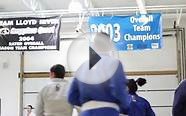The "Maryland Institute for the Promotion of the Mechanic Arts" was established in November 1825, by prominent citizens of the city of Baltimore, such as Fielding Lucas, Jr., (founder of Lucas Brothers - office supply company), John H. B. Latrobe, (lawyer, artist, author, civic leader), Hezekiah Niles, (1777-1839), (founder of national newspaper "Niles Weekly Register"), Thomas Kelso and others of whom Mr. Latrobe was a long-surviving influence on the early years of the Institute because of his activities as a noted local writer, lawyer, civic leader and inventor. Other leaders and officers in that first decade were William Stewart-president, George Warner and Fielding Lucas, Jr. – vice presidents, John Mowton – recording secretary, Dr. William Howard – corresponding secretary, and Managers James H. Clarke, D.P. McCoy, Solomon Etting (local Jewish merchant/political leader), Benjamin C. Howard, William Hubbard, Thomas Kelso, John H.B. Latrobe, William Meeter, Hezekiah Niles, William Roney, William F. Small, S.D. Walker, John D. Craig, Jacob Deems, William H. Freeman, Moses Hand, William Krebs, Robert Cary Long, Jr. (famed architect), Peter Leary, James Mosher, Henry Payson (founder of First Unitarian Church), P. K. Stapleton, James Sykes, P. B. Williams. The General Assembly of Maryland incorporated the Institute in 1826 and in the following years during November beginning that year (Tuesday, November 7, 1826), exhibitions of articles of American manufacture were held in the "Concert Hall" on South Charles Street. A course of lectures on subjects connected with the mechanic arts was inaugurated and a library of works on mechanics and the sciences was begun to be collected.
After about its first decade of being located at "The Athenaeum" (the first one of two structures to bear that name, a noted landmark for educational, social, cultural, civic and political affairs) at the southwest corner of East Lexington and St. Paul Streets. This was west from along Lexington Street from the facing the second Baltimore City/County Courthouse between North Calvert and St. Paul Streets from 1805-09 (and site in the entire block of the current third city courthouse of 1896–1900—now renamed 1985 for national civil rights leader Clarence M. Mitchell, Jr., (1911-1984). Because of the financial panic and economic dislocation caused by the failure and "run" on several collapsed Baltimore banks including the Bank of Maryland which closed prior to the subsequent "bank riot" of 1835, this first "Athenaeum" was destroyed by fire on February 7, 1835 and the newly-emergent Institute lost all of its property and records and subsequently was almost dissolved.












